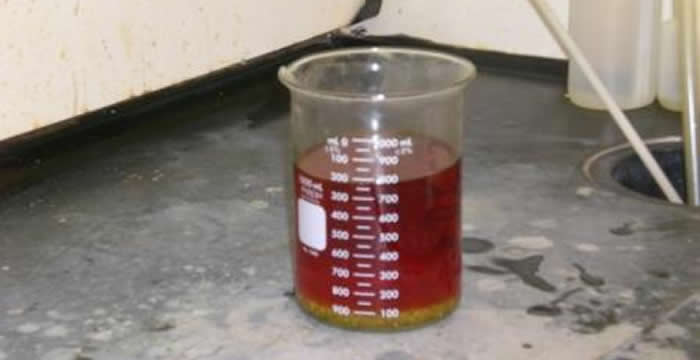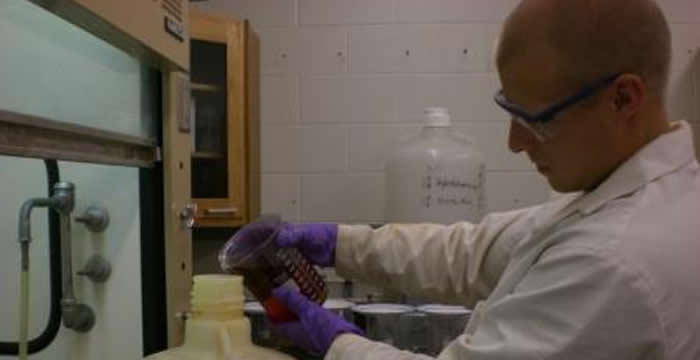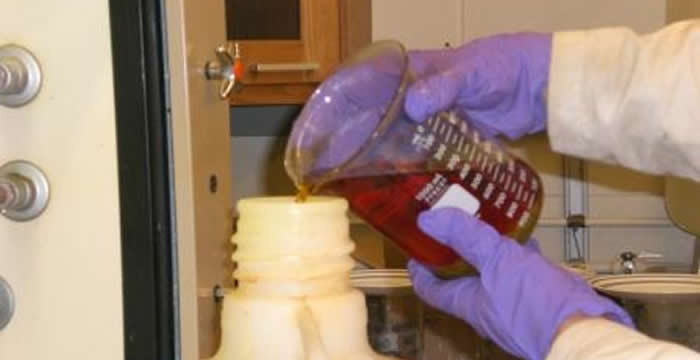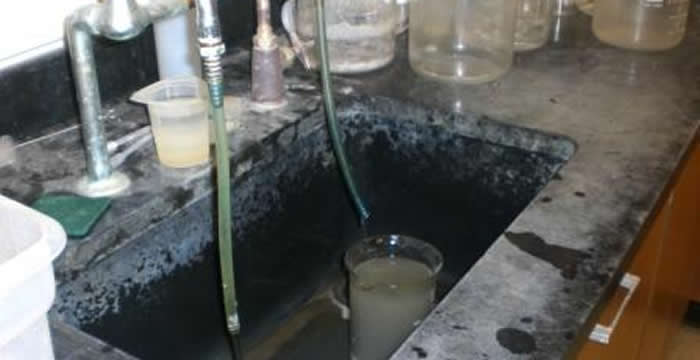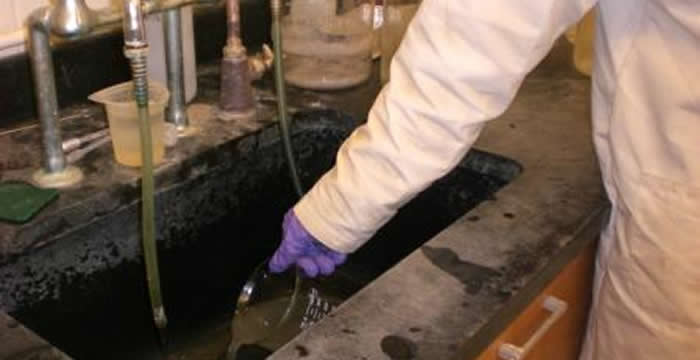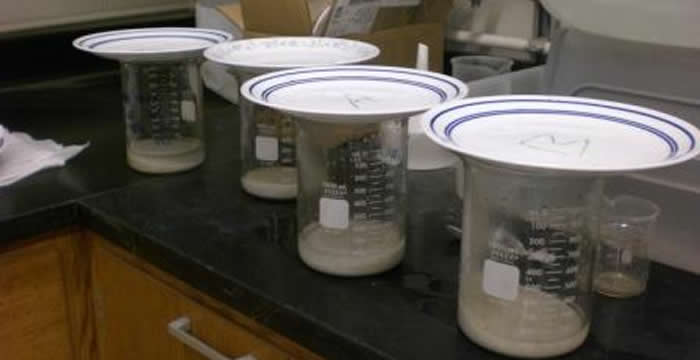Rinse and Dry
After aqua regia, the sample must be rinsed with deionized water in order to rid the sample of the acids added in aqua regia. Then the sample must be dryed in order to proceed to the next chemistries. Deionized water is used instead of tap water because tap water contains 10Be whereas deionized water does not.
Procedure
Notes: Make sure that there is a good supply of sodium hydroxide solution and plenty of room in the waste acid carboy, before beginning. Do not pour the aqua regia mixture into the hydrofluoric acid waste carboy. The first few steps should be done in or near a fume hood.
- Put the waste acid carboy into the fume hood and lower the glass to working height.
- Decant the acid from the 4 liter beaker into the waste acid carboy.
- Add deionized water to the beaker, being careful to suspend all the grains, and decant the water into the waste carboy. To avoid contaminating the sample, do not touch the rim or inside of the beaker.
- Repeat the last step at least three more times, or until the decanted water is not obviously yellow.
- Remove the beaker from the fume hood and put it in a sink with a deionized water tap. The decanted water in the remaining rinses can be poured down the drain.
- Rinse the sample with deionized water at least fifteen, and possibly more than twenty repetitions will be needed.
- Transfer the sample to a 1 liter beaker and put it in the oven to dry.
- After aqua regia, the sample must be rinsed with deionized water in order to rid the sample of the acids added in aqua regia. Then the sample must be dryed in order to proceed to the next chemistries. Deionized water is used instead of tap water because tap water contains 10Be whereas deionized water does not.
